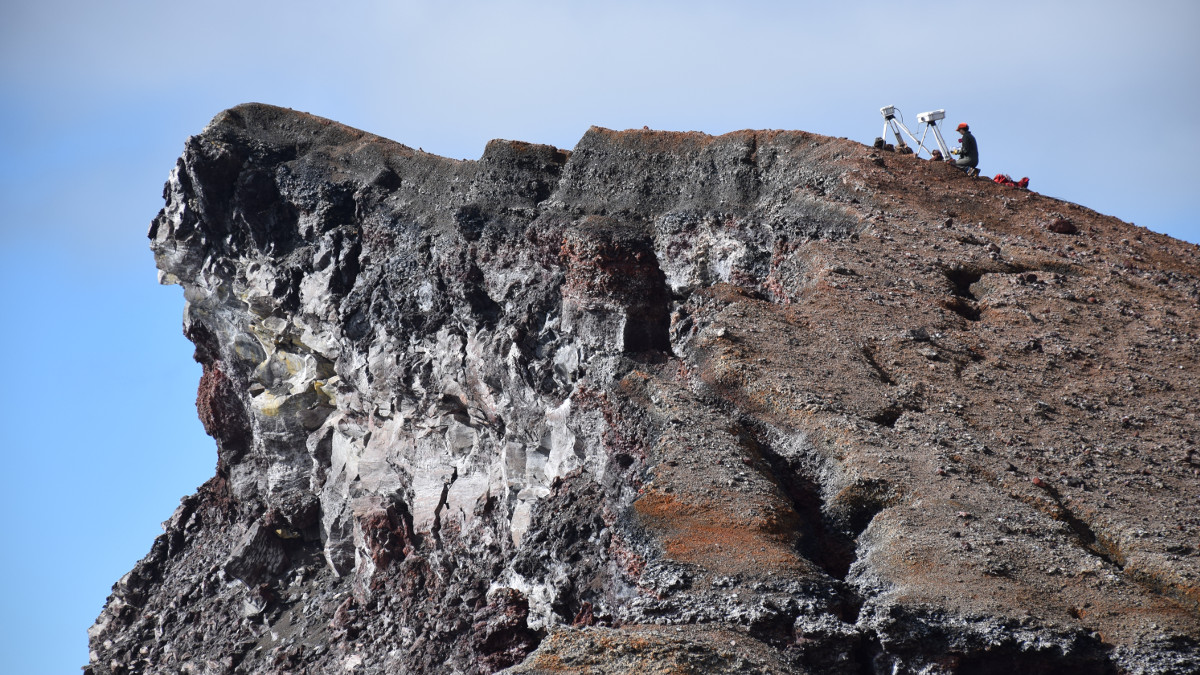(BIVN) – With all the discussion on emergency management and effective notification, this week’s Volcano Watch article, written by the U.S. Geological Survey Hawaiian Volcano Observatory scientists and affiliates, seems especially timely.
January also happens to be Volcano Awareness month.
From USGS HVO:
Keeping informed about Hawaiian volcanoes is the first step to preparedness
With recent attention focused on the need to be prepared for all hazards, this week’s Volcano Watch offers ways to stay informed about Hawaiian volcanoes and earthquakes.
Today’s smartphones and 24/7 news coverage provide an ever-increasing number of ways to follow what’s happening in the world of natural hazards, including volcanoes and earthquakes. For some, this barrage of information is challenging. But others might argue that offering hazards information in a variety of ways reaches a broader audience more quickly and efficiently.
Whatever your preference, there are several ways that Hawaii residents, visitors, and public safety officials, as well as volcano fans around the globe, can follow what’s happening at Hawaiian volcanoes.
Let’s review the options to find what works for you.
First and foremost, the U.S. Geological Survey’s Hawaiian Volcano Observatory (HVO) website is available 24/7 for people with access to the Internet. On this website you can find daily eruption updates for Kīlauea and weekly updates for Mauna Loa. There are also links to photographs, videos, maps, webcams, monitoring data, Volcano Watch articles, news releases, frequently asked questions, and much more.
Updates on Hawaiian volcanoes, HVO’s weekly “Volcano Watch” articles, and other volcano postings can also be followed via social media, including Facebook and Twitter.
If HVO’s website and Internet searches do not yield the information you’re seeking, you can email askHVO@usgs.gov to inquire about Hawaiian volcanoes and earthquakes. HVO strives to answer all askHVO email inquiries.
For people who want information sent to them directly and automatically, day or night, the U.S. Geological Survey offers two notification services: one for volcanoes and one for earthquakes. Hawaii residents interested in rapid notifications about volcanic and seismic activity are encouraged to sign up for both (more than 11,000 subscribers currently receive HVO notices). Here’s how:
The USGS Volcano Notification Service (VNS) is a free, customizable email-subscription service that delivers notifications of significant volcanic activity directly to your inbox or cell phone. You can sign up for this service.
With the VNS, you can choose from various types of notifications—Updates (daily, weekly, or monthly), Status Reports, Volcano Activity Notices, and/or Information Statements. You can also select whether you want to receive notices only from HVO about specific Hawaiian volcanoes, and/or notices about other U.S. volcanoes in the Cascades, Alaska, California, and at Yellowstone.
The USGS Earthquake Notification Service (ENS) is a similar subscription service for information about earthquakes that occur in Hawaii and elsewhere in the world. The ENS can be customized to deliver messages about earthquakes of particular magnitudes, at specified times, and via your preferred method (email or text). You can sign up for this free service.
Not everyone is connected to the Internet. For those folks, tuning into local radio stations or watching your favorite Hawaii television news source are good ways to keep informed about important changes at Hawaiian volcanoes. This is especially true during volcanic and earthquake emergencies, when Hawai‘i County Civil Defense proactively issues messages via public media about any situation that could impact public safety.
HVO also maintains short, recorded telephone messages about Kīlauea’s recent eruption activity and Mauna Loa’s current status. Call 808-967-8862 (for daily Kīlauea updates) or 808-967-8866 (for weekly Mauna Loa updates) at any time to hear these messages.
Hawai‘i Volcanoes National Park also provides online information through its “What’s going on with the volcano?” webpage, which includes links to HVO updates, as well as National Park Service and USGS photos and videos. This webpage also provides visitor information on viewing lava safely.
Volcano Awareness Month—held each January, during which HVO scientists offer programs about Hawaiian volcanoes—is a great way to stay informed. Details about upcoming events are posted on HVO’s website, or you can email askHVO@usgs.gov or call 808-967-8844 for more info.
Recently, Kīlauea Volcano’s two ongoing eruptions have been relatively steady, but long-time volcano watchers know this could change at any time. An eruption of Mauna Loa is not imminent, but it is an active volcano that will erupt again.
We hope this review of how to find information about Hawaiian volcanoes will help everyone be ready when changes occur.


by Big Island Video News3:08 pm
on at
STORY SUMMARY
HAWAII ISLAND - The USGS Hawaiian Volcano Observatory says keeping informed about Hawaii's volcanoes is the first step to preparedness.